...
| Numbered figure captions |
|---|
| SubtitleText | Drag histogram plot (red rectangle) onto data viewer canvass |
|---|
| AnchorName | Invoke Histogram 1 |
|---|
|
 Image Removed Image Removed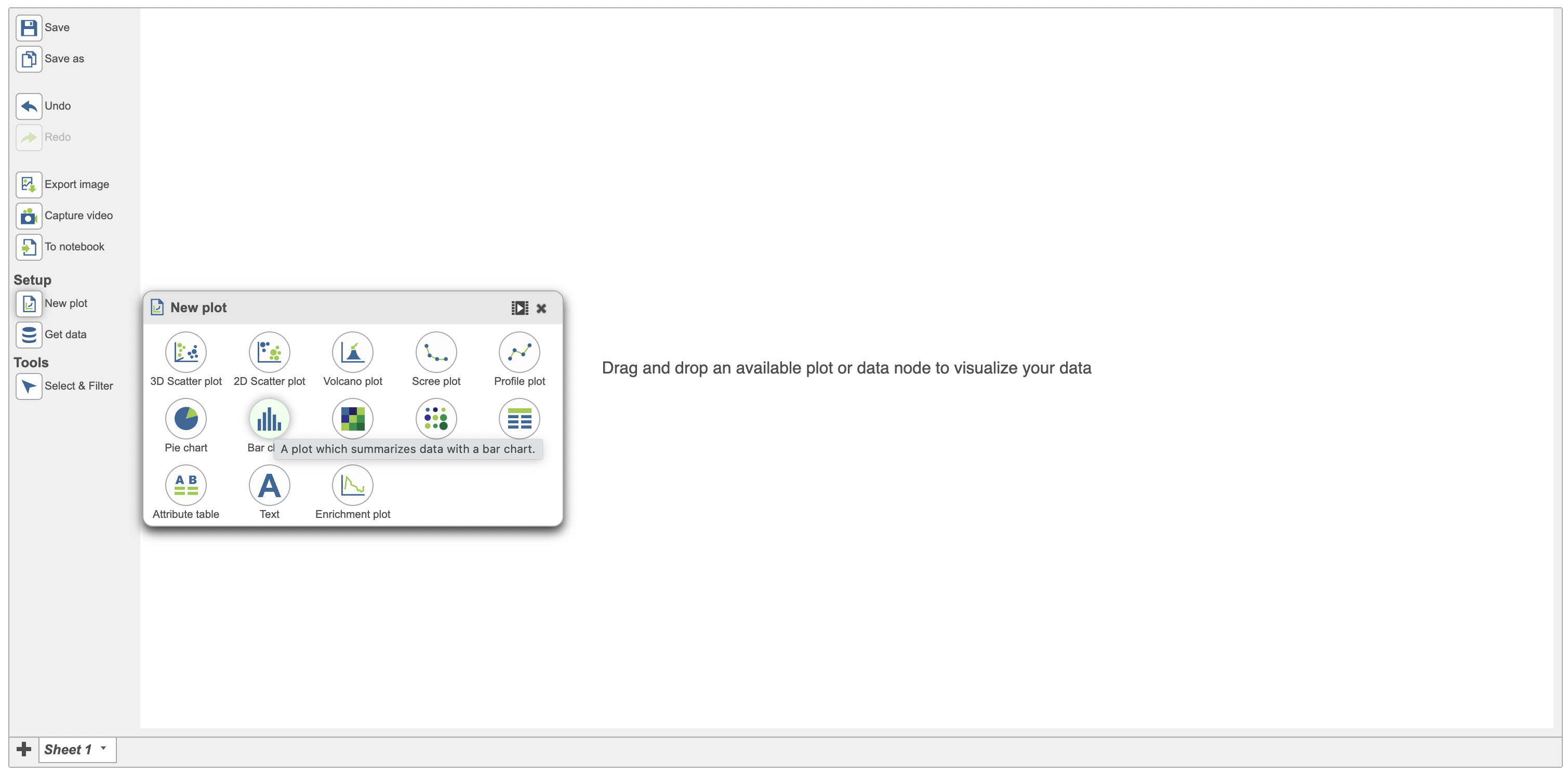 Image Added Image Added
|
Upon dropping the histogram on the canvas, a dialogue opens up with the different data nodes that can be displayed on the histogram. Select your data node of interest (Figure 2).
...
| Numbered figure captions |
|---|
| SubtitleText | Select Normalized count data node (red) to display on histogram plot |
|---|
| AnchorName | Plot datanode on histogram |
|---|
|
 Image Removed Image Removed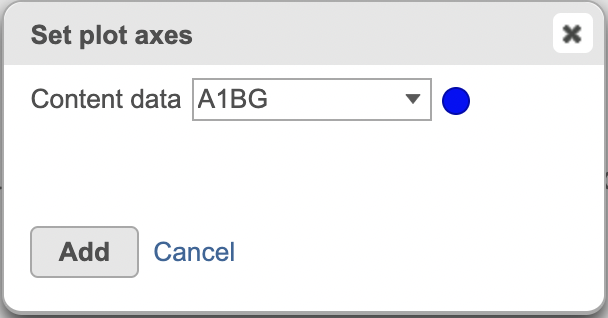 Image Added Image Added
|
The first row in the data will be displayed by default in the histogram and in this case, it is the histogram of the expression values for the gene A1BG (Figure 3).
...
| Numbered figure captions |
|---|
| SubtitleText | Histogram showing the distribution of AIBG expression (red) |
|---|
| AnchorName | Default display on histogram |
|---|
|
 Image Removed Image Removed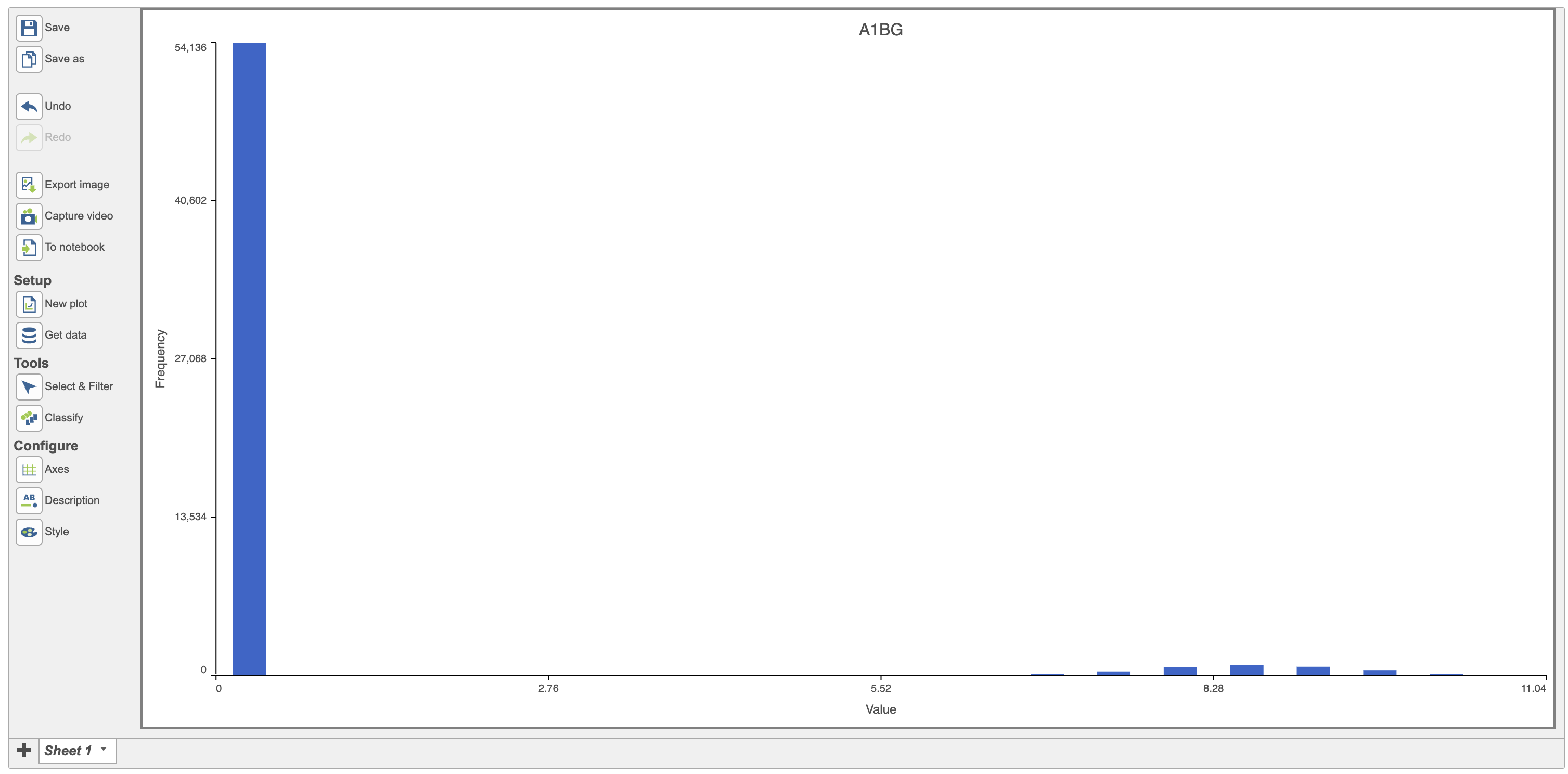 Image Added Image Added
|
Histogram of Continuous variables
...
| Numbered figure captions |
|---|
| SubtitleText | Histogram showing the distribution of expressed genes variable (red rectangle) |
|---|
| AnchorName | Histogram of expressed genes |
|---|
|
 Image Removed Image Removed Image Added Image Added
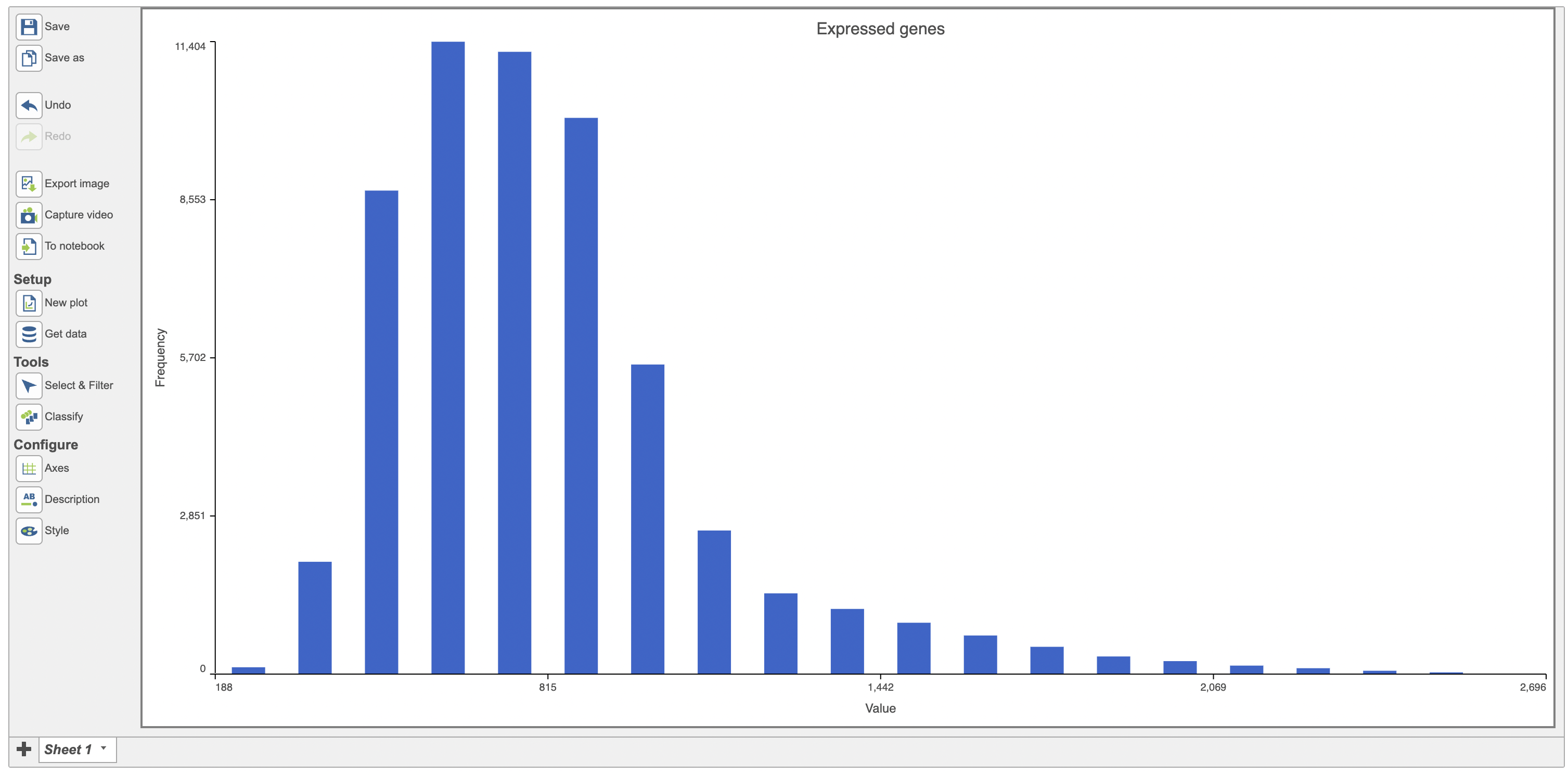 Image Added Image Added
|
Use the "Sort by" function to sort the plot. The default sorting is by Value on the x-axis and this default setting is sorted in ascending order. Users have the option to change that by changing the Default to value or frequency in the sort option (Figure 5)
| Numbered figure captions |
|---|
| SubtitleText | Sort by function can be by Value or Frequency (red) |
|---|
| AnchorName | Sorting options for continuous variable |
|---|
|
 Image Removed Image Removed Image Added Image Added
|
The sort menu was changed to Value in the case below and user can now sort Value by either ascending or descending order. Here the Value of expressed genes is sorted by descending order (Figure 6).
...
| Numbered figure captions |
|---|
| SubtitleText | Histogram annotated by graph-based classifications |
|---|
| AnchorName | Annotate histogram |
|---|
|
 Image Removed Image Removed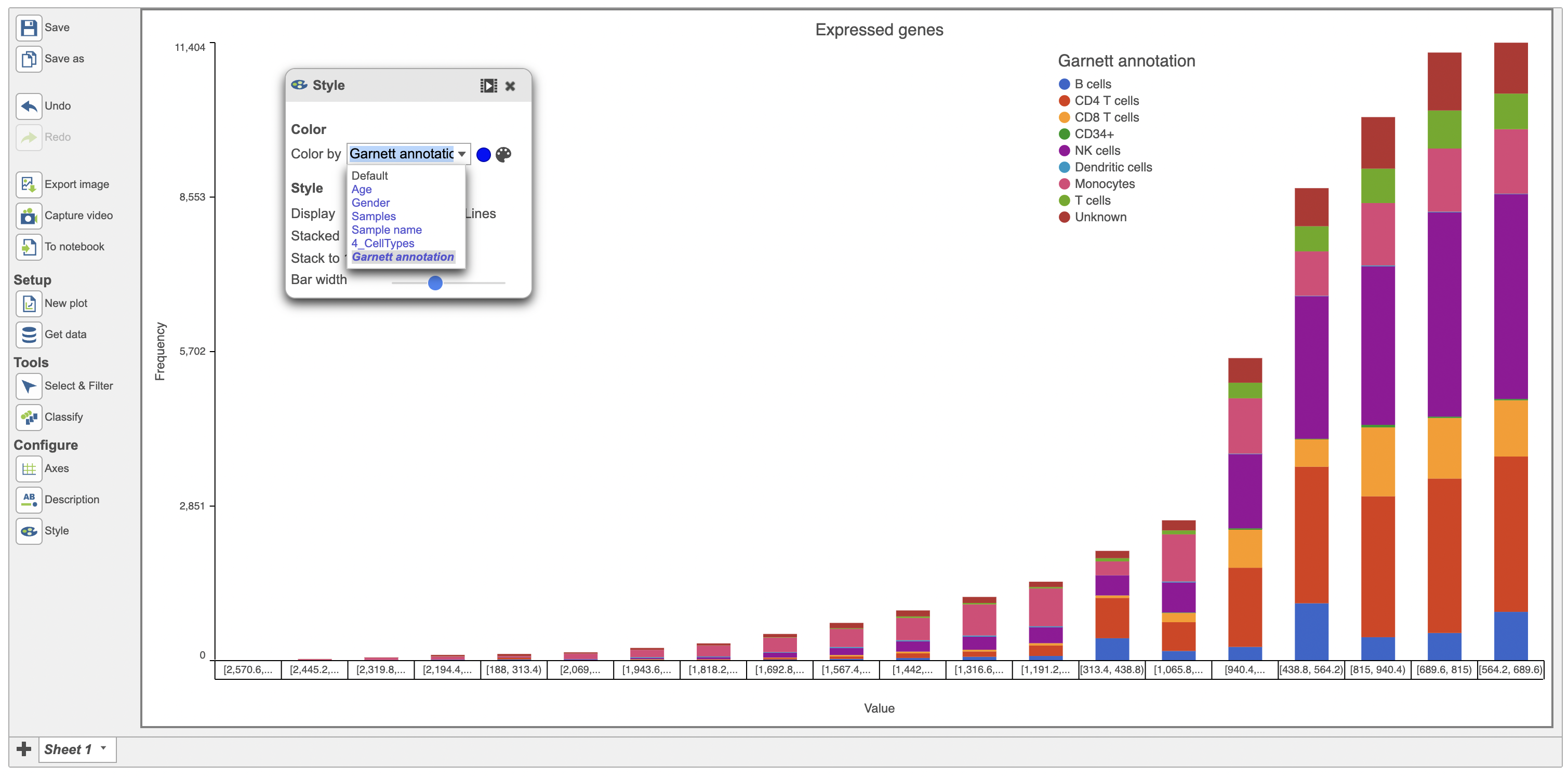 Image Added Image Added
|
The bars in the histogram above were stacked. They can be unstacked using the Style function as seen below in red (Figure 8).
| Numbered figure captions |
|---|
| SubtitleText | Unstacked bars in the histogram plot |
|---|
| AnchorName | Unstacking histogram |
|---|
|
 Image Removed Image Removed Image Added Image Added
|
Users also have the option to bin by either Count or Size. When binned by Count, the user specifies the number of bins for the data and the distribution is fit into the specified number of bins. Data below is binned by Count (Figure 9).
| Numbered figure captions |
|---|
| SubtitleText | Histogram of expressed genes with number of bins specified as 5 |
|---|
| AnchorName | Image of expressed genes with bin Count of 5 |
|---|
|
 Image Removed Image Removed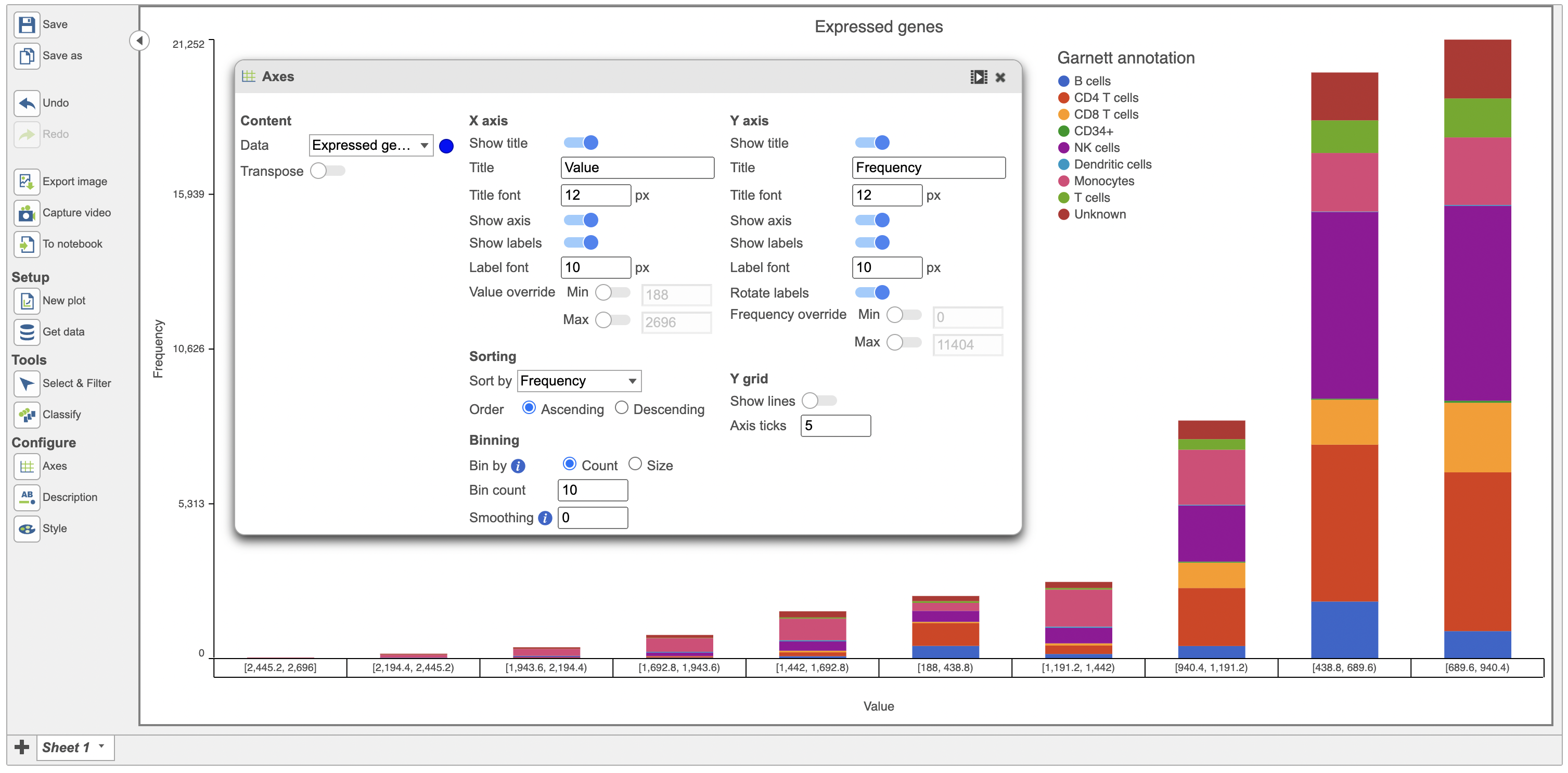 Image Added Image Added
|
When binned by Size, the user specifies the number of items in the bin (size of a bin). This is used to calculate the number of bins required for the data. Data below is binned by Size (Figure 10).
...
| Numbered figure captions |
|---|
| SubtitleText | Histogram of expressed genes with size of bin specified as 10 |
|---|
| AnchorName | Value binned by Size image |
|---|
|
 Image Removed Image Removed
|
Histogram of Categorical variable
In the figure below, a categorical variable (Classifications) was selected to be displayed in the plot and sorted by frequency in ascending order (Figure 11).
| Numbered figure captions |
|---|
| SubtitleText | Histogram of Classifications variable sorted by ascending order of Frequency |
|---|
| AnchorName | Image with Categorical data displayed on plot |
|---|
|
 Image Removed Image Removed
|
For categorical data, the user can select number of groups in the categorical variable to be binned together. In the figure below, the Classifications variable is binned into groups of 5 (Figure 12).
| Numbered figure captions |
|---|
| SubtitleText | Histogram of Classifications variable with bin groups set as 5 |
|---|
| AnchorName | Binning of Categorical variable |
|---|
|
 Image Removed Image Removed
|
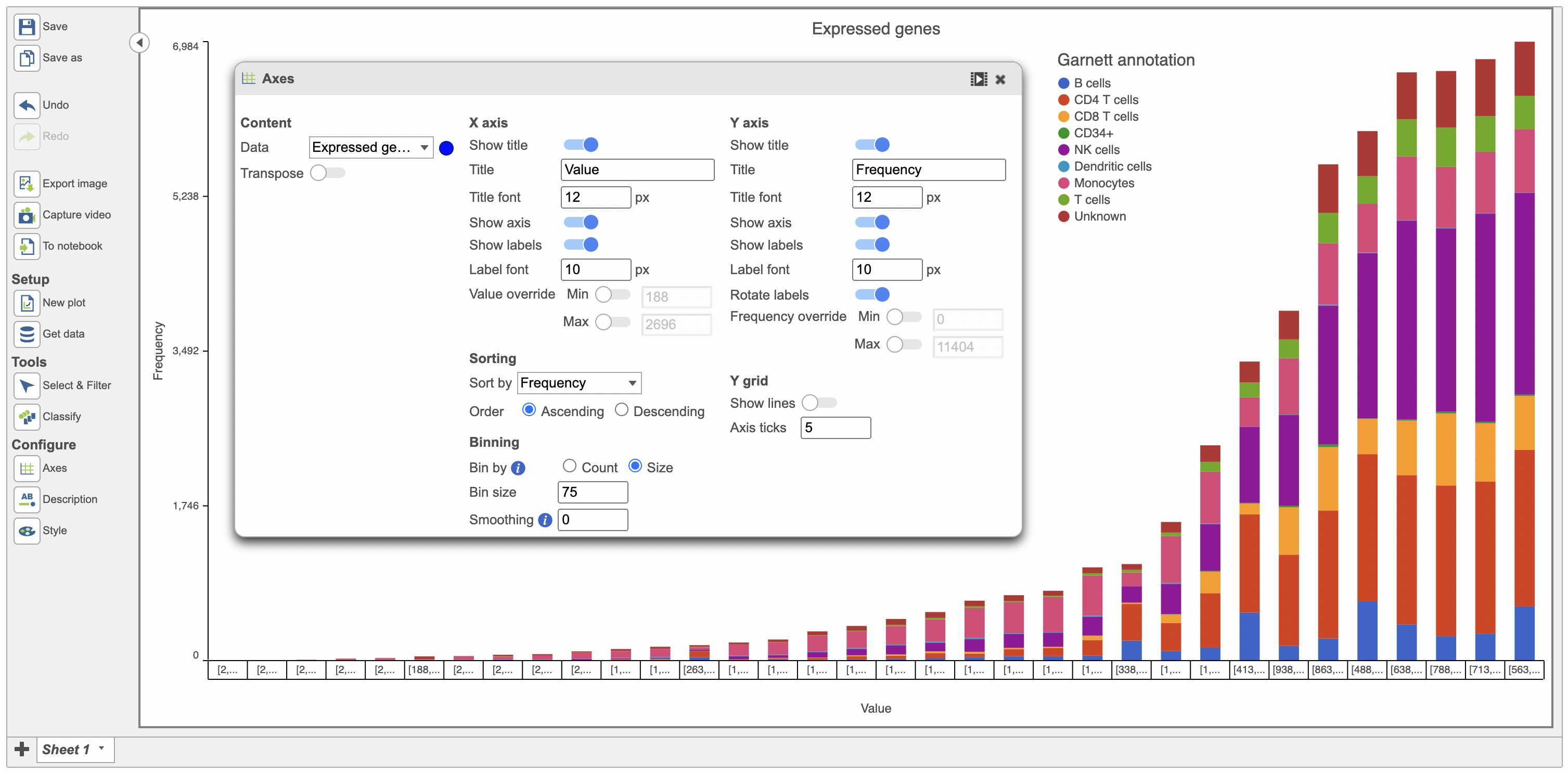 Image Added Image Added
|
Additional Assistance
If you need additional assistance, please visit our support page to submit a help ticket or find phone numbers for regional support.
...




















